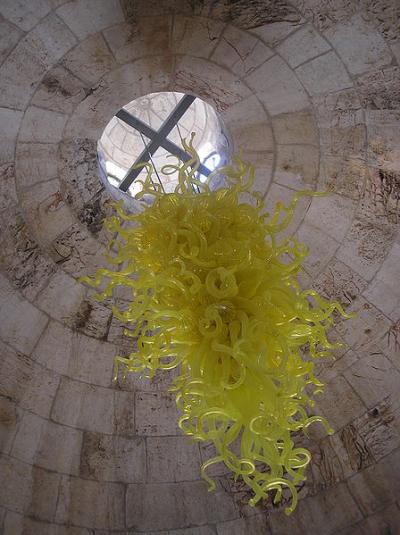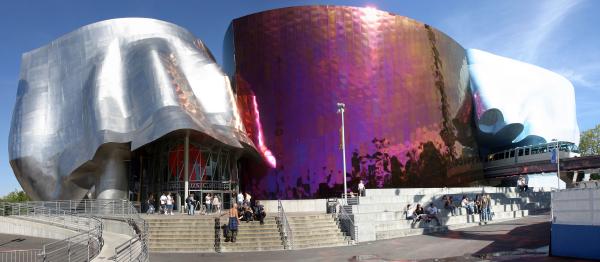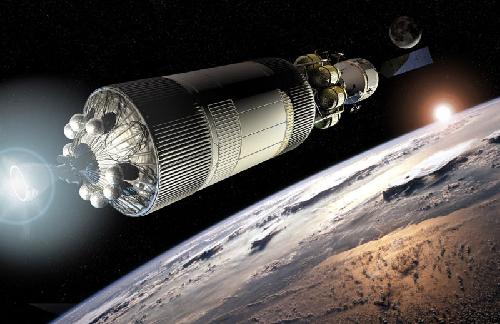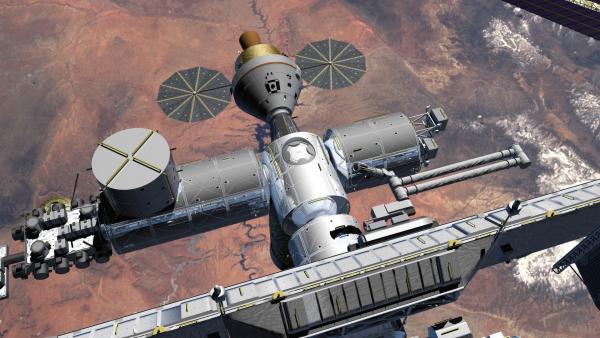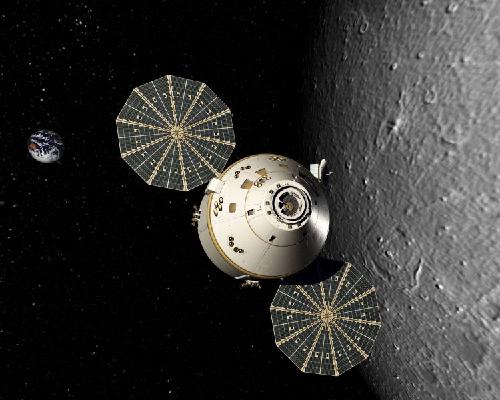| < | Wavepacket Blog |
> |
| << Newer entries << | |
| 2010 | |
| June | |
| Tue Jun 22 23:46:51 2010 The Idiocy of Chasing Genius |
|
| May | |
| Wed May 26 22:14:32 2010 Netflix Map |
|
| Fri May 21 23:30:08 2010 Space Plan |
|
| >> Older entries >> | |
| >> links >> | |
| Tue Jun 22 23:46:51 2010 The Idiocy of Chasing Genius The Seattle Center's strange obsession with Chihuly |
|||||||
| Lately, the
Seattle Center has been ripping out some older (and faded) attractions, and plans to replace
them with a
Chihuly glass exhibit for which it will charge an admission fee.
For those who don't know, Dale Chihuly is a local glass-blowing artist who is fairly famous world-wide. However, he has a bit of a reputation as a self-promoting gas bag who has other people do all his work. In fact, the whole Seattle Center Chihuly Exhibit idea was due to Chihuly himself. That plus the admission fee have Seattleites up in arms over the proposal. Is a Chihuly glass exhibit, proposed and promoted by one of the era's most self-promoting and over-exposed artists, really the best use of public space in the center of the city? (Hopefully by now you've realized I'm not an impartial observer.) Because of the uproar when the Chihuly exhibit was announced, the Seattle Center said it would solicit proposals for other ideas. They announced their list in early July, you can see it here. Really, none of the other proposals are that great (giving KEXP a cool studio, or a "Museum of the Mysteries"--is that the best we can do?). My favorite from that list is probably the Northwest Native Cultural Center Initiative , which would include a building housing the center, as well as an outdoor area with cedar trees (very Northwest!) and winding paths. Not bad! In announcing the proposals, the Seattle Center re-submitted Chihuly's proposal, and upped their ante, announcing they would give a free field trip for every eighth-grader in the Seattle school district. I like the focus on education, but really, this is just busing in kids to drink the Chihuly Kool-Aid, and it's a one time gimmick. Although I wasn't blown away by the other proposals, the Seattle Center only gave the community a few weeks to submit ideas. I think they could have done better! Also, they don't appear to have learned from their greatest mistake: the Experience Music Project. The EMP is just the latest chapter in Paul Allen's ambitious personal quest to lose as much money as he can in a short amount of time. [Side note: did you see that Paul Allen recently put his yacht up for sale? A mere $162 million.] In addition to being a spectacular money-loser, the EMP is also ugly. Very ugly. When asked, most Seattleites voted to destroy it. When Paul Allen decided to inflict the EMP on Seattle, he asked for the most famous architect at the time: Frank Gehry. Paul Allen picked a recognized genius. How could he go wrong? Well, the main lesson is that just because someone does something great once, doesn't mean they will do something great every time. Frank Gehry isn't perfect. The Massachusetts Institute of Technology is suing Gehry over a building they commissioned from Gehry in 2004. Certainly Gehry's overall reception has been mixed, with the Economist noting
...but that's just nitpicking. Haven't people noticed that Gehry's works mostly look alike? Haven't people notice that great debut albums are often followed by poor sophomore efforts? Don't you think Andy Warhol was over-rated? One of the cities to get architecture right is Chicago. After the Great Chicago Fire in 1871, Chicago had to rebuild. Rather than follow the Paul Allen/Seattle Center strategy and try to commission self-promoting geniuses, Chicago had many lesser-known architects provide great buildings. The result was a city that defined an entire era of architecture. One of the most famous competitions was the Tribune Tower design competition, which not only resulted in a great building but the competition itself spurred new ideas in architecture worldwide. When the Chicago Tribune decided to build the world's best office building, they didn't pick a genius and declare that anything that person produced would be brilliant. Instead, they had a worldwide competition and judged each entry on its merits. That strategy works! [Yes, there is a Gehry in Chicago, and it's ugly too.] So I recommend that the Seattle Center, and Paul Allen, stop trying to chase self-proclaimed geniuses. If they really want great ideas, sponsor a real design competition, and give people time to submit! Comments |
Related: economics Unrelated: books energy environment geopolitics lists mathematics predictions science |
||||||
| Wed May 26 22:14:32 2010 Netflix Map Mapping what your neighbors watch |
|||||||
| Several months ago,
Slate posted a link about a great interactive map. Apparently, someone took all of
Netflix's public data about rentals per zip code, and put it on an online map
you could explore. So if you want to find out what your neighbors rented in 2009, all
you have to do is
click on their dynamic map.
The map is supposed to be anonymous, since they only provided data per zip code. However, Slate pointed out that some US zip codes only had a single rental! Often they were funky zip codes that included only airports, for instance. However, the map is fun to explore if you know the neighborhoods. For instance, I recently moved from 98178 to 98109. Most of the top 10 movies were pretty common between the two areas. Milk and The Curious Case of Benjamin Button were both popular movies in each location. Likewise, it was reassuring that no one in either zip code watched The Day the Earth Stood Still--or at least, it didn't make it into either zip code's top 50. However, there were some differences. For instance, Eagle Eye was the 13th most popular movie in the 98178 zip code, but it wasn't even in the top 50 for 98109. Likewise, Religulous and Vicky Cristina Barcelona were 17th and 18th in 98109, but neither made the top 50 for 98178. The biggest difference (that I could find) between New York and Seattle? People in New York love The Taking of Pelham 123 although it didn't register in Seattle. What was most popular in your zip code? Comments |
Related: lists Unrelated: books economics energy environment geopolitics mathematics predictions science |
||||||
| Fri May 21 23:30:08 2010 Space Plan Now I have even more respect for the new NASA direction. |
|||||||
| A friend of mine is the Astronomy columnist for the
Seattle Examiner. If you are interested in Astronomy in the Seattle area, you should definitely read
his articles!
He recently posted an article about former NASA administrator Michael Griffin's talk at the Boeing Museum of Flight, in which Griffin wasn't entirely supportive of the new NASA direction. In particular,
Harsh! Griffin called the new direction "Obama's proposals", although most of them came from the so-called Augustine Report, the outcome of the Review of US Human Spaceflight Plans Committee. You can find the Augustine Report here, which is very readable! If you are at all interested in the US space program I recommend flipping through it. It is over 150 pages (ack) but I read through the Introduction (Chapter 1), the coverage of current programs (Chapter 4), and their evaluation of critical technologies (Chapter 7). It is a pretty interesting report! Popular Mechanics has an online article about 5 Surprising Passages from the Full Augustine Report. [If you flip through the report, on page 12 you'll find an awesome diagram showing the International Space Station, color-coded by which country supplied the components. It is clear that the ISS is almost exclusively a US and Russian venture, although Japan kicked ass (far above the European contributions). Although, before I deride Europe too much, I should given them the benefit of the doubt--they may have recognized early on that the ISS was a colossal waste of money.] Michael Griffin also didn't like the Augustine Report "which he feels got some things right but blew many others." Many astronauts also don't like the new direction. Neil Armstrong and Eugene Cernan, the first and last astronauts on the moon, testified to the Senate that
Ouch! However, not all astronauts agree with them. For instance, Russell Schweickart recently wrote that the new direction was a much-needed change. Schweickart noted
And of course, my own blog posts ( No Moon and Moon Shot ) significantly elevated the national debate. Recently The Space Review ran a series on the new direction (see part 1 and part 2 ). The review is somewhat politically-heavy (for instance, worrying that a more efficient NASA will mean less pork to keep congress happy) but basically calls out the main differences of Obama's plan:
Obama's plan is good about separating the many phases of launching people and material into orbit. For instance, both the Shuttle and the Constellation programs have the same problem: they use the same vehicles for people and cargo. This is very expensive, since any manned vehicle has huge overhead for safety! Separating the two (launching people and cargo using different vehicles) is much cheaper and may be more reliable--and safer. Also, Obama's plan puts more funding into private space companies for launches into low earth orbit. This wasn't a viable option ten or twenty years ago, but it is now. And it means that we'll build out our private launch industries, let them spread the risk and try out new technologies, and let NASA focus on other issues such as deep-space propulsion and life support. Much better! So I understand why many people aren't happy about he change in direction. And certainly Michael Griffin is worried about his legacy. But the new NASA direction looks better and better the more I look at it. Comments |
Related: economics science Unrelated: books energy environment geopolitics lists mathematics predictions |
||||||
| Links: |  |
Blog Directory | Blog Blog | Technorati Profile | Strange Attractor |
